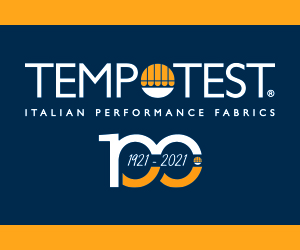India’s Textile Industry Continues to Attract New Investments, Despite Economic Difficulties
May 25, 2018
BANGALORE — After two subpar years interjected by demonetisation and rollout of the Goods and Services Tax (GST), India’s GDP growth is seen recuperating to a respectable 7.5% in the year 2018. However, this is still below the thirteen-year average.
As the country’s growth recovers, the Indian home textile manufacturing industry continues to attract investments. “CRISIL expects the 63 firms to spend as much as Rs 3,700 crore [$552 million] to expand capacities in fiscals 2018 and 2019. That would be significant considering that Rs 4,600 crore [$686 million] has already been spent in the previous two fiscals,” noted Indian analytical firm CRISIL.
However, growth in GDP needs to be understood in a wider context, particularly whether it leads to a jobless or job-creating growth. Job losses in the textile industry are serious, as layoffs and shutdowns happen regularly. In addition, the budgetary allocation for the Technology Upgradation Fund Scheme (TUFS) was reduced by 23%, from $390 million in 2016-17 to $300 million in 2017-18 to 300 million for 2017-18 from 390 million USD for 2016-17. This new budget is even lower than the one prior to 2014-15, despite TUFS being one of the key drivers for investments in the textile sector.
“We are keeping our fingers crossed, as we have passed through a challenging period after demonetisation and hope our efforts to increase business succeeds,” expressed Mandeep S. Wadhwa, the managing director of New Delhi’s Seasons Furnishings Limited. By large, the retail system in India had always been a cash market, but customers now have to accept and adopt paying taxes for all purchases, and a higher sales tax has added to subdued business in this sector, he added. “But growth is a must, and since 2016 we have prioritised more on the B2B model,” said Wadhwa. “Online marketing by e-retail majors is also an irritant, as ready-to-use products such as cushions and curtains are mass-produced at low costs, and youngsters seem to prefer the convenience of buying online. This has added to acute competition, as profits are too narrow to manufacture and market,” observed Wadwha.
Currently, the home textile industry is deeply concerned about the goods and service tax. All charges and taxes are exempted for exports, but taxes have to be paid as soon as the invoice is made, and the wait for refunds can be indefinite. These issues lie in the refund delivery mechanism, as refund applications are processed manually. The exporter pays a 12% tax up front, and refunds are indefinitely delayed. This blocks working capital, and borrowing from banks has never been easy.
“Operating margins in the home textile industry have always been competitive, and these delays are causing havoc. International competitors will reap the orders”, commented Amitabh Sen, a consultant for a few home textiles exporters with sixteen years’ experience in furnishing fabrics for global markets. India’s tax system is causing huge amount of working capital to be locked up, severely hurting the businesses of exporters and affecting their ability to be competitive in international markets. “I will not be surprised if textile exports dip. Some stagnation is already happening, as export figures are showing a negative growth. As soon as possible, the administration should resolve this refund issue to put growth of textile exports back on recovery mode,” opined Sen. Indian banks have been hesitant to lend to the textile industry, as few are in medium size, and the SME sector has not been able to service the debt. Textile major Alok Industries, a Mumbai-based textile manufacturing company with a loan default of $3.5 billion, has declared bankruptcy. “Nevertheless, home textile exporters here are capable of recovering quickly, if the GST refunds are resolved quickly,” said Amitabh Sen.
















